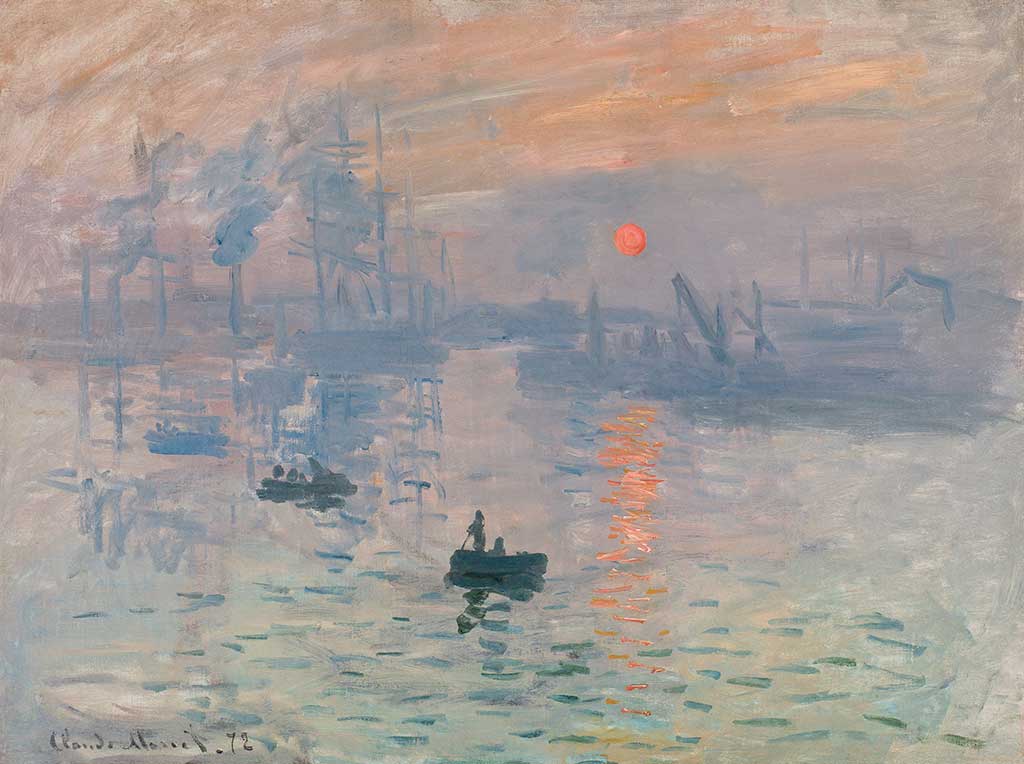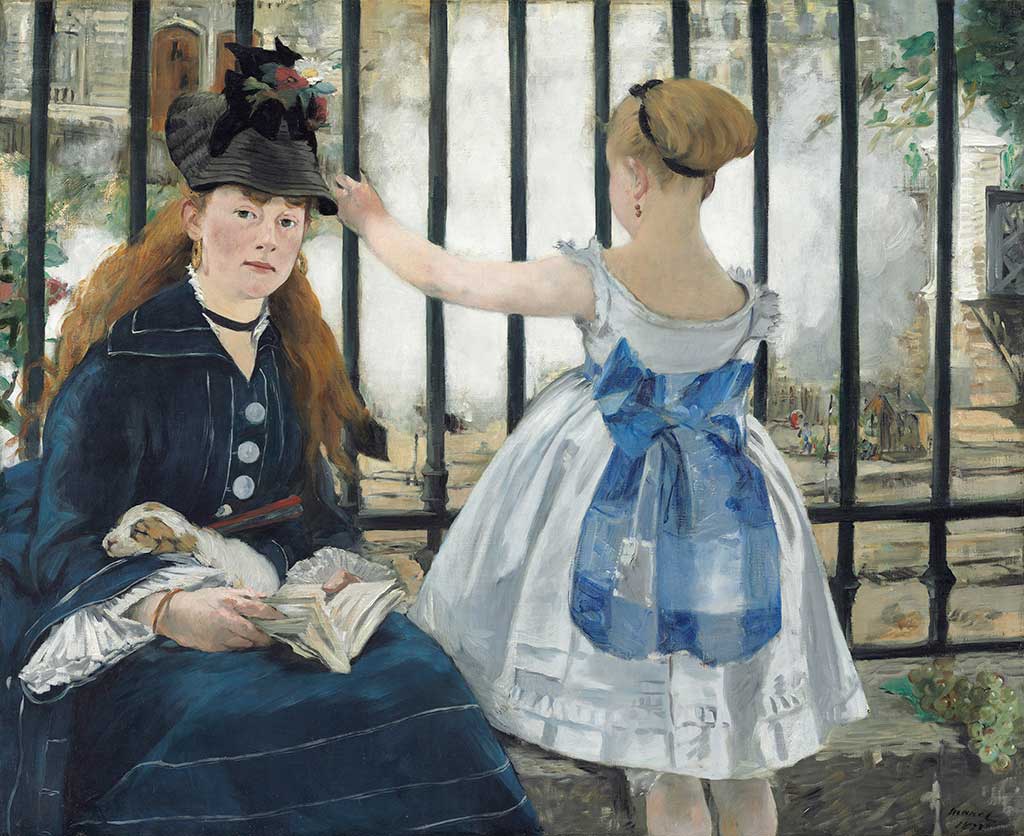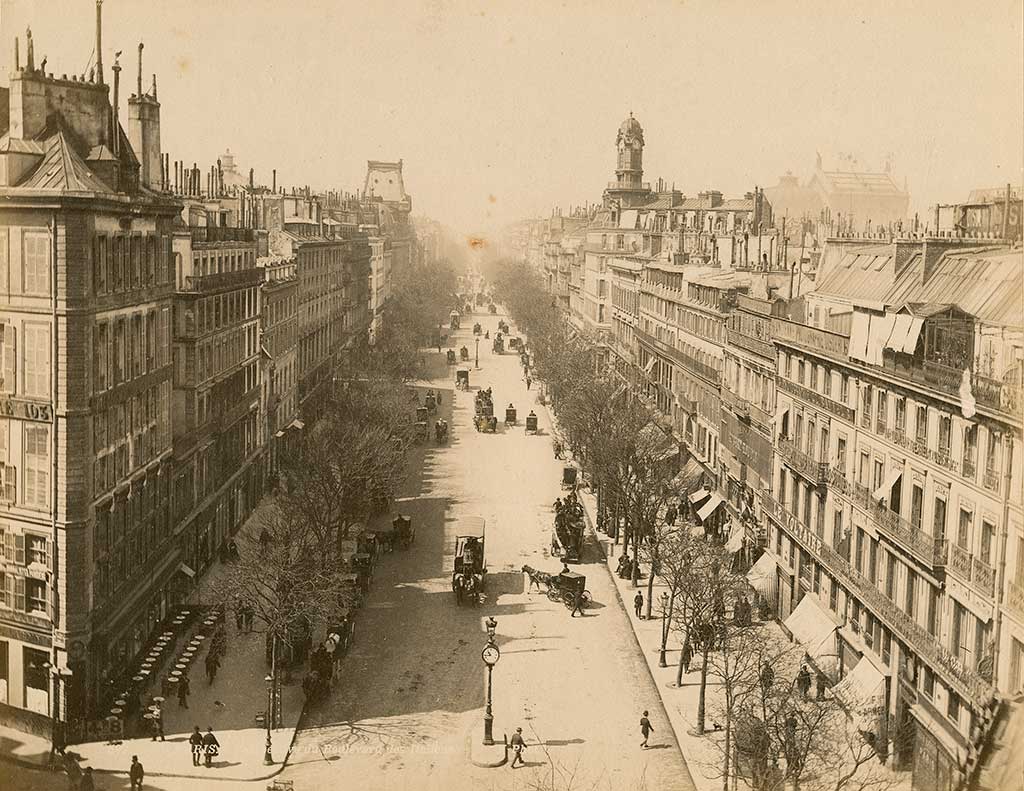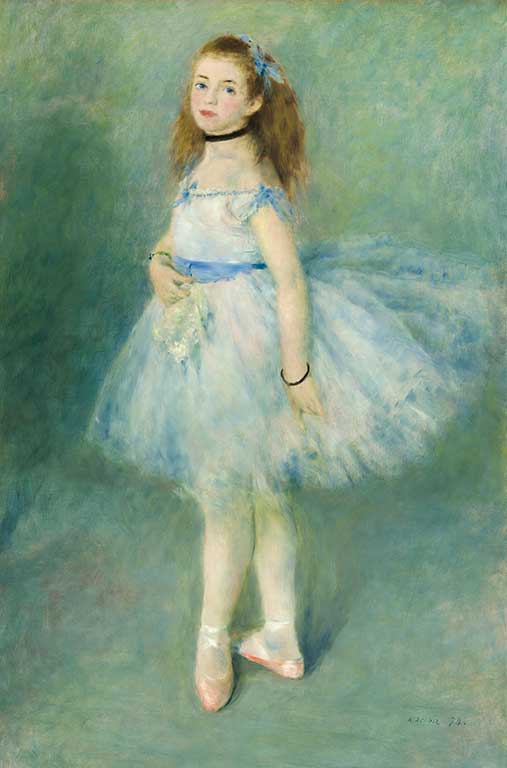PARIS 1874: THE IMPRESSIONIST MOMENT
Maryanne Pollock
Paris 1874: The Impressionist Moment at the National Gallery of Art in Washington DC illustrates Paris at the moment when the Impressionists energized the City of Lights with their spectral colors and brushstrokes of immediacy. It was from the ashes of L’Annee Terrible, the defeat of the French in the Franco Prussian War, the failed revolt of the Commune and the worst winter on record in Paris that the first Impressionists organized their show simultaneously to the Salon, the most prestigious art exhibition in France. It was held in the opulent state of the art showroom of Nadar, the official photographer for the Gran Hotel by an eclectic group known as Societe Anonyme, who set forth with new energy, independence and depiction of light in an open Exhibition without jury or prizes.

In this exhibition Paris 1874, the Impressionist Moment, co-curated by teams from Washington D.C.’s National Gallery of Art, and Musee d’ Orsay in Paris, the exquisite Monet painting titled Impression Sunset was borrowed from the Musee d’Orsay. One of the first Impressionist paintings, Monet’s work leads the viewer to experience color as the 1874 Parisian audience might have, jolted by the new modern art differing from historical, religious and mythological paintings in the state sponsored Salon exhibition. As the Impressionists burst forth with fire and energy as piercing as the sun in this masterpiece by Monet, this year launched the Impressionists, and some argue the beginning of Modernism.

Swaths of Paris were still in ruin from defeat in the recent Franco Prussian War, the worst winter and starvation on record and yet from this rubble would rise “one of the most beautiful and exciting cities in the world”, envisioned by many but finally emerging in 1852, headed by Louis Napoleon III, the nephew of former Emperor Napoleon Bonaparte. Finding Paris filthy and crime ridden, he employed the cold hearted but efficient Haussmann who, without visiting the areas he gutted transformed Paris with wide boulevards and elegant buildings bustling with bookstores, galleries and hotels, cafes, photography studios, a new Opera House, and boutiques with the latest fashion. Caillebotte painted this dynamic scene in primarily brilliant cobalt blues from the perspective of his sixth-floor studio.
The Impressionists’ new ways of illustrating modern life and its kinetic energy used newly invented materials from chemists like Sennelier who produced tubes for painting “en plein air” (painting outdoors) and photography and film recording movement and street scenes.
However, not all impressionists painted outdoors. Many, including Renoir, Sisley, Cezanne, Pissarro, and Morisot, energetically captured the fleeting plein air where they made essential notes and watercolor sketches on paper or small wooden panels and hustled back to their studios to finish their paintings with oil on canvas.
Guiseppe DeNittis who arrived from Italy six years prior to making his debut at the Impressionists show, created some of the most vibrant plein air studies in the show. His six hour climb up to the exploding Mt Vesuvius required an immediacy in technique for his very survival. He answered that call by using a gorgeous mahogany panel that served as a stand in for the scorched earth, contrasting its flatness with luminous white puffs of smoke and ash and deep black gorges.

also known as Gare Saint-Lazare,
Edouard Manet, considered a “father of modern art”, disgusted the public with his painting The Railway when it first showed at the Salon, as it epitomized the modernity of the moment. No longer would kings and saints, nor the aristocracy touting biblical heritage be the standard of the day with this painting jolting the public into that new reality. In Manet’s painting, a beautifully dressed woman is freed from the confines of her home (and perhaps her corset?), taking power back by directly confronting the viewer, reading with a girl who faces away from us, both lost in their own worlds. The trains wheeled new bourgeois wealth from international hubs like London and even America, connecting trains from Le Havre to Paris and into the French countryside and beyond. As with the new technology of the time, new art became the bridge to and announcer of the future. Although difficult to imagine from our perspective, paintings like this were an assault to the public eye who considered the Impressionists, slap dash, garish and unfinished.

Mary Cassatt attended the Pennsylvania Academy of the Fine Arts against her parents’ wishes. Moving alone to Paris in 1866, she faced misogyny from her fellow male artists including Edgar Degas, who eventually became a close friend and collaborator. Her portrait painting in the Salon 1874 exhibition titled Ida revealed the mania for all things Spanish in Paris at the time. She represented a new internationalism that was key to Paris becoming the center of the art world for decades to come. Like Caillobotte, she was never represented by the conservative, pro-family, pro-monarchy, moralistic art dealer Durand Ruel as part of the Impressionists’ shows. Mary Cassatt, and Caillobotte whose male gaze landed on the more muscular male figures rather than on the coquettes loved by Renoir and Durand Ruel faced further exclusion. With Cassatt’s brother going on to become the wealthiest man in America when he owned the Pennsylvania Railroad, she used her connections to procure sales of the Impressionists’ work, especially Degas, who, even though he was a key player in the Impressionist group, considered himself a realist. His paintings often relied on a Renaissance technique of rendering the entire painting a la imprimatura, a full tonal scale underpainting to which glazes of color would be added. It was a letter from Degas to the mother of Berthe Morisot to participate in the Salon exhibition of 1874 that resulted in her participation as one of only two women, along with an anonymous aristocrat to show in the first exhibition of the Impressionists. Despite the ban on women in the academies, and from the art jury of the Salon, women still managed to make stellar work, making up thirteen per cent of participating artists. Without doubt, it did not hurt that Manet was her brother-in-law, and she was the great niece of Fragonard. She was a wonderful painter in her own right producing such work as The Cradle for the first Impressionist show in 1874, a tender intimate moment capturing perhaps the overtired and monocular vision of a new parent, in this case, her sister, Edma, also a painter.

Most impressive and energizing about this grand exhibition at the National Gallery of Art is how this eclectic group of discontents, some rejected from the conservative Salon, some maintaining footholds in both the Salon and exhibitions with the Impressionists freed themselves from the fiscal and ideological confines of traditional venues. They turned the ashes of revolution into evolution and created their own independent collective, the first of its kind in France taking advantage of a new law allowing a joint stock holding company to exist with variable personnel and variable capital. They took what was meant to be criticism of their work to brand themselves and work independently, free of the restrictions of the academic Salon, and hypermoralistic gallerist Durand Ruel, opening a market for their work to new monied collectors pouring into Paris. Impressionist paintings, particularly those by Monet, are often hung next to those of Abstract Expressionists and other contemporary paintings cementing their relevance today. They still beckon us to be here now and to focus on the light, a message that is as relevant today as it was 150 years ago and perhaps eternally.

